So what's the deal? I don't know what the advatages are. Is more user friendly? Can you post huge MP3 files on that thing without routing to hidden webhosting service? Becuse that would be awfully nice. Or is it just what all the cool kids are doing. I'n not knocking that, I would like to be cool someday too.
(EDIT- Holy crap, all the cool kids are doing it, it say so right on their own page)
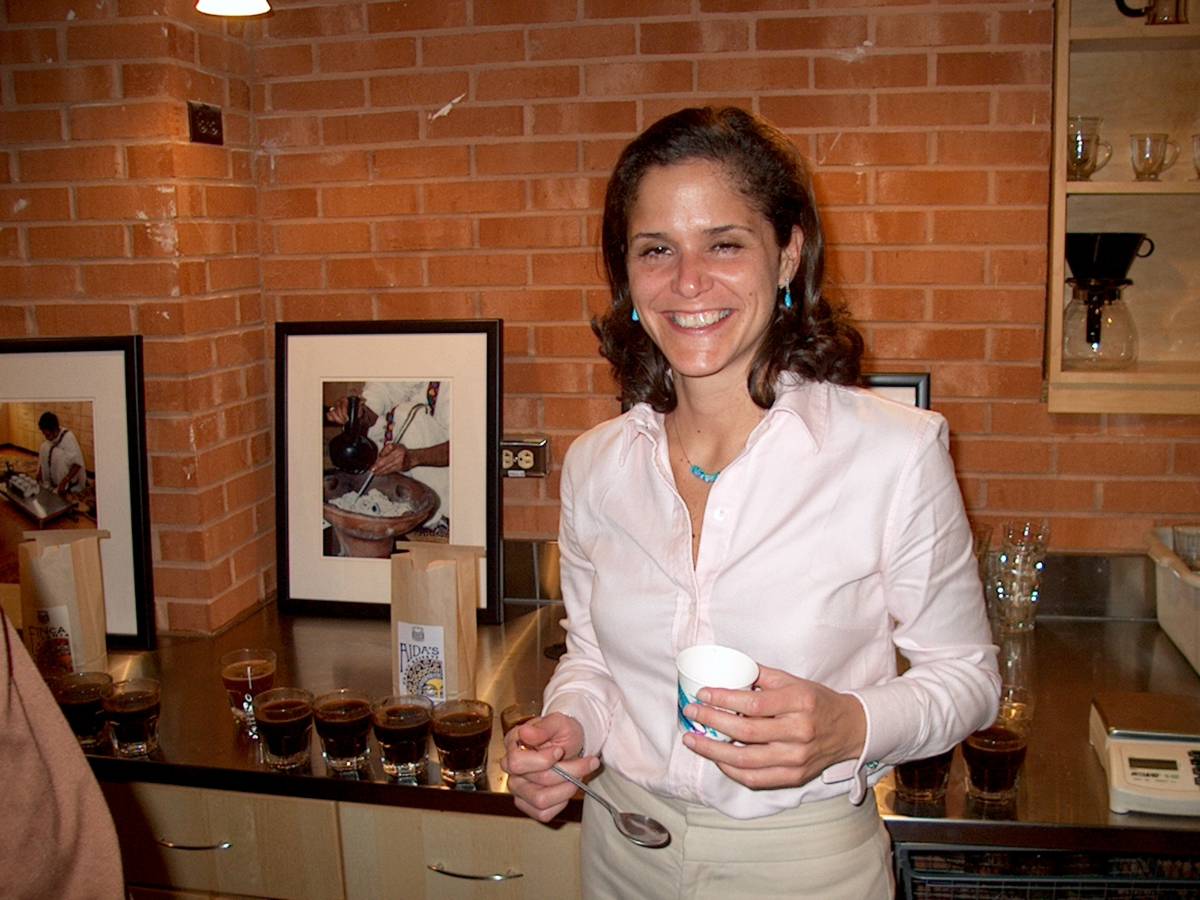
The reception held for Aida Batlle last night at Counter Culture Coffee in Durham, N.C. Was a small intimate affair with about 20 people in attendance. I knew that she was in town because I read that she had made a stop at Pheasant Creek. Then, a few days ago, I received very short notice that would make a surprise visit to the shop where I work on Friday nights, but it was too short and I could not be there. I was delighted to find that a 12 oz bag of her Grand Reserve had been left behind, but more on that later. The relief I felt when I found out about the reception, and found out that I had a babysitter for the evening, was a great satisfaction.
My wife and I arrived to find a few people milling about the training and cupping room. This is wing of the CCC building that is roughly 700-900 square feet outfitted with a GB-5, FB-70, a towering Robur grinder, a Mahlkonig Guatemala grinder, an assortment of smaller Mazzers (I think that is the make) and their newest addition; the LaMarzzoco Swift. There are several tables, glasses, spoons, scales, and of course, the cupping grease board. Standing by the door was Peter Giuliano, pouring himself a cupping glass of red wine. I received bottled water, also in a cupping glass. That was all they had, cupping glasses.
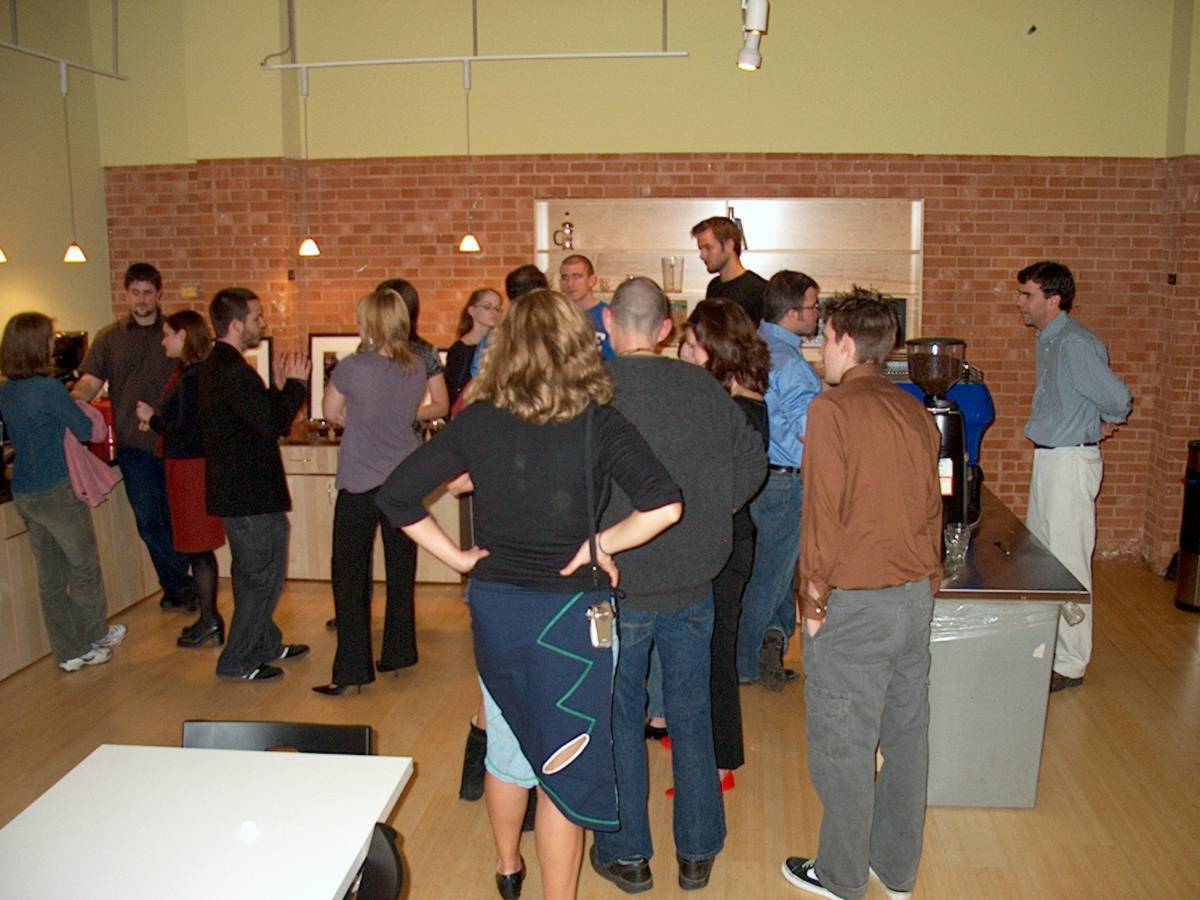
There was a fantastic buffet of food (I don't know who catered) that included shrimp, crab cakes, sesame beef on a stick, and some crescent shaped stuffed and fried Indian things, the name of which I do not know. It seemed a little thin for the vegetarians, except for the Indian crescents, but I was told Gee was out of town, and he would be the only one to complain if he were present (I always imagined him eating ½ inch thick, red, runny, rare steak. You just never know). Every thing was delicious.
After everyone got their fill Peter Giuliano began to introduce Aida Batlle by prefacing that her humility and modesty prevented her from telling people about the CoE's that her coffees started winning immediately after she took over her father's coffee farms (her family has farmed coffee for 5 generations). The first year she entered samples, (around 2002, I forget the exact year) she broke a number of records: the first female farmer to win, the first to have two samples in the top 20, the first El Salvador to take first place. Peter listed some others that escape me.
After being praised for long enough, she began her slide show presentation. She spoke of how she went back to El Salvador, her country of origin (no pun), after having lived in the U.S.A., and having no coffee back ground herself. The farms were in bad shape as a result of pushing the trees to overproduce for so many years, only to fetch low mass market prices. In addition to the low monetary earnings, the shade grown trees had not been taken care of properly as all the efforts went into pushing the trees. Activities such as stumping (cutting trees back to 2 foot stumps to create new low growth), breeding, nursery growing, and proper pruning had not been done for a long time. Even though she had no direct knowledge of the coffee growing business, Aida said she understood very well that growing for quantity was sure to sacrifice quality, and she began to turn around the farming practices they used at the three farms she was now managing; Los Alpes, Finca Kilimanjaro, and Finca Mauritania. The farms are producing far less than they did in years past, but she now produces coffees
on par with some of the best coffees in the world. The peaberries that make up the Grand Reserve, which were selected from the best crops of each of the three farms, sold this year for 20 American dollars per pound, green. She admitted that she would have been perfectly happy (and only expected) to get $3.00 for it. She was going to auction a third of the micro lot among three American buyers, but then the buyers just offered her the $20 per lb. (under the suggestion of Peter Giuliano) and split the lot between them. She sold another third to buyer in Japan, and the last to a buyer in Norway. So you will have to go a long ways to find this coffee anywhere else in the world. And to think that just two years ago other coffee farmers were telling here she would not be able to give away peaberries, since there is no market for them (in El Salvador they are considered a defect, an aberration, a useless mutation) That is exactly what she did; she gave away her peaberries. I think she stated that her intention was to try to create a market where she perceived there was none.
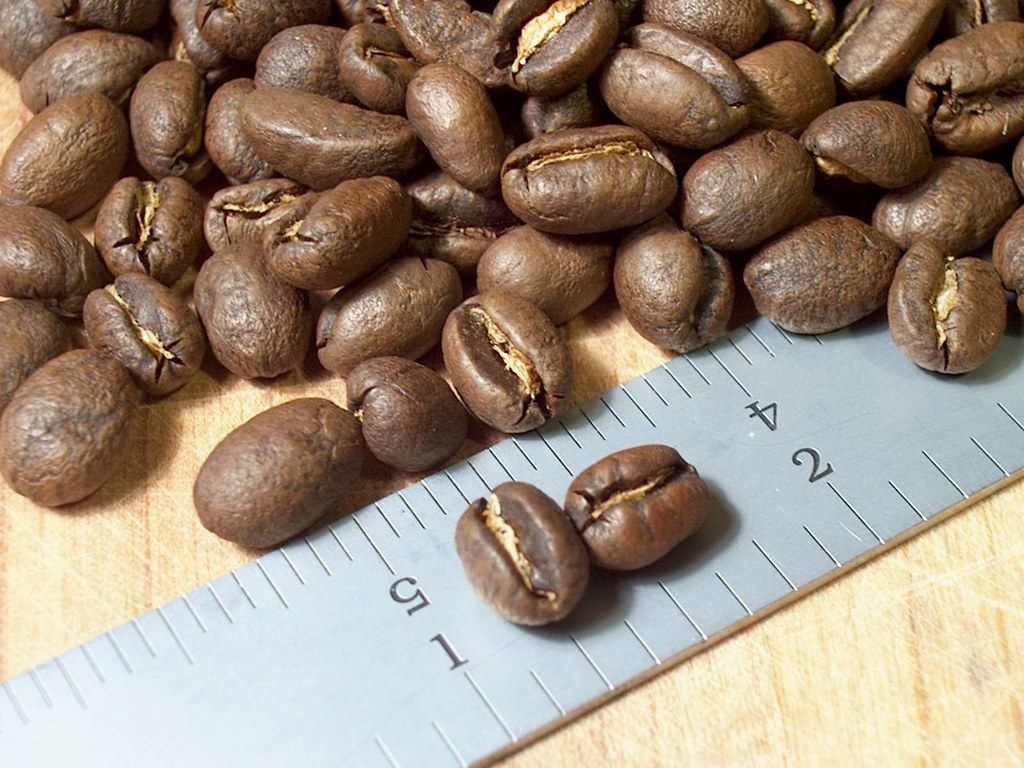
When the presentation was over, there were a couple of Q & A's about some farming practices, and it turns out that changing over to organic practices has been an extremely expensive shift. The organic pesticides cost something in the neighborhood of 5 times more than the commercial products, and she started to buy organic chicken dung and manure, which is also very costly. The time spent on pruning and raising new saplings and taking care of the shade trees is much more exhaustive than the techniques of the late 20th century. But her inspection for her organic farming certification was just last month, in October of 2006, and she seemed confident about the results, which she will be getting back soon.
Then came the good stuff. Beans were weighed, water was boiled, spoons and spit cups were passed out to all who wished to partake in a traditional cupping. There were also several press pots plunged for those who wanted to sample the goods in a more “after dinner” style. Three of her coffees were presented in the cupping: Finca Mauritania, Grand Reserve, and a third which had no label or writing on the bag. I heard what it was called in passing but I don't remember now. They said they did not have a label made for it yet, but that Murky had made their own label for it. So if you are in the D.C. area, ask about Aida's “other” coffee. I got a whiff of Brandy fragrance, and it had a sweet flavor that made me think of raisins and dried figs. It also had a clear acidity and a marvelous velvety body.
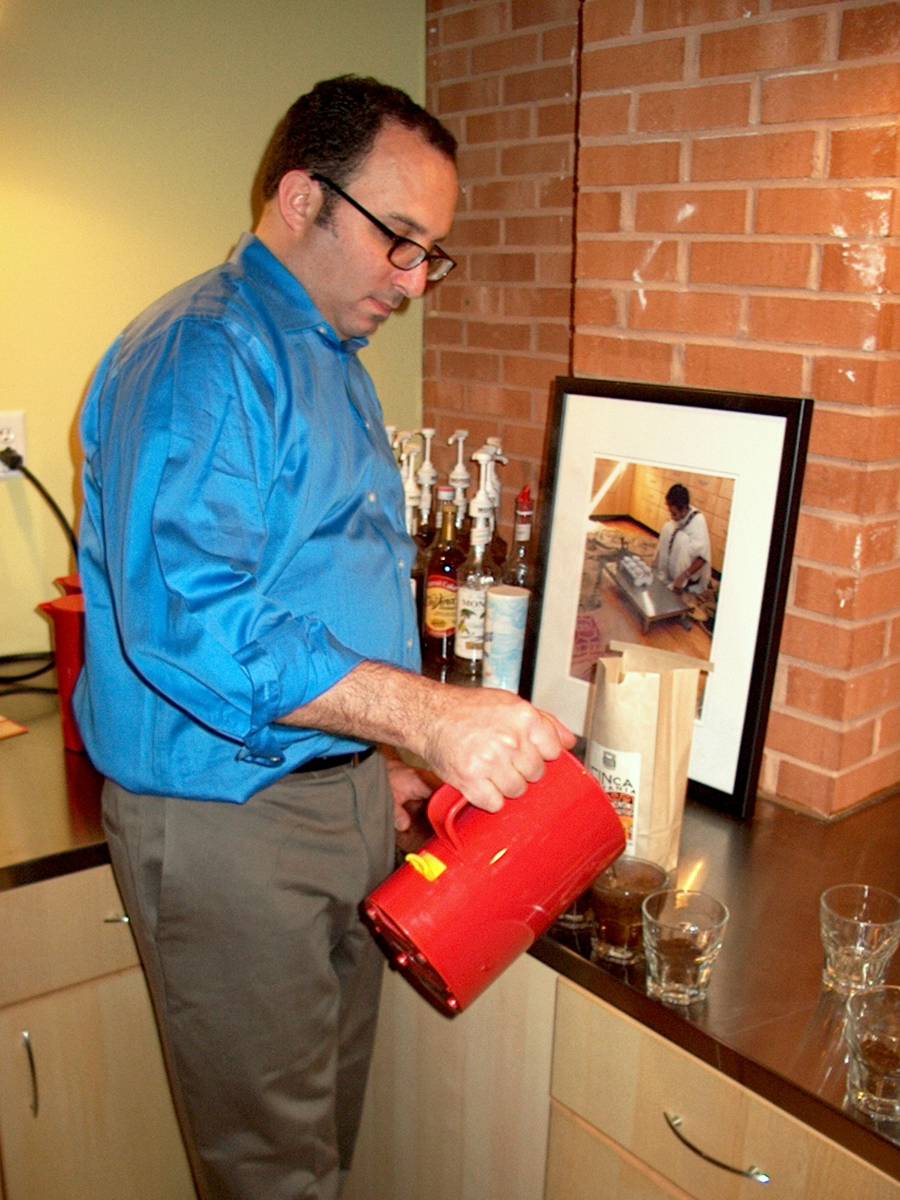
I will let you find some Mauritania for yourself, but this entry would be incomplete without a run down of the Grand Reserve. The moment the hot water hit the grounds I caught a distinct fragrance of apricots. This happened on three different occasions (I have been drinking the stuff since Thanksgiving day). There was also and sweet brown sugar smell, and hint of lemon. I forgot to mention, the beans smell like candy in the bag. One CCC employee, Rich Futrell, described it to me as peanut butter cups before I mentioned the candy thing to him (a little validation goes a long way in such subjective efforts). I have had both medium and thick body sensations from different cuppings, and when it was thick it was fantastically rich. If you get a hold of some of this stuff try it with a long steep time, and despite the temptation to be stingy with such pricey coffee, make sure you are at the top of your ounces to water ratio. It will be well worth it.
The acidity of this coffee was astonishing to me in that it was unlike any I have previously experienced. It is no stretch to say I perceived a good deal of tart nectarine and sweet Mandarin orange. Like the sweet tart candies, it has that magical Yin Yang balance. This is an all around stellar coffee, and because of the extremely limited supply (I think 500 lbs in the whole world) it is wroth the $45 per 12 oz. bag.
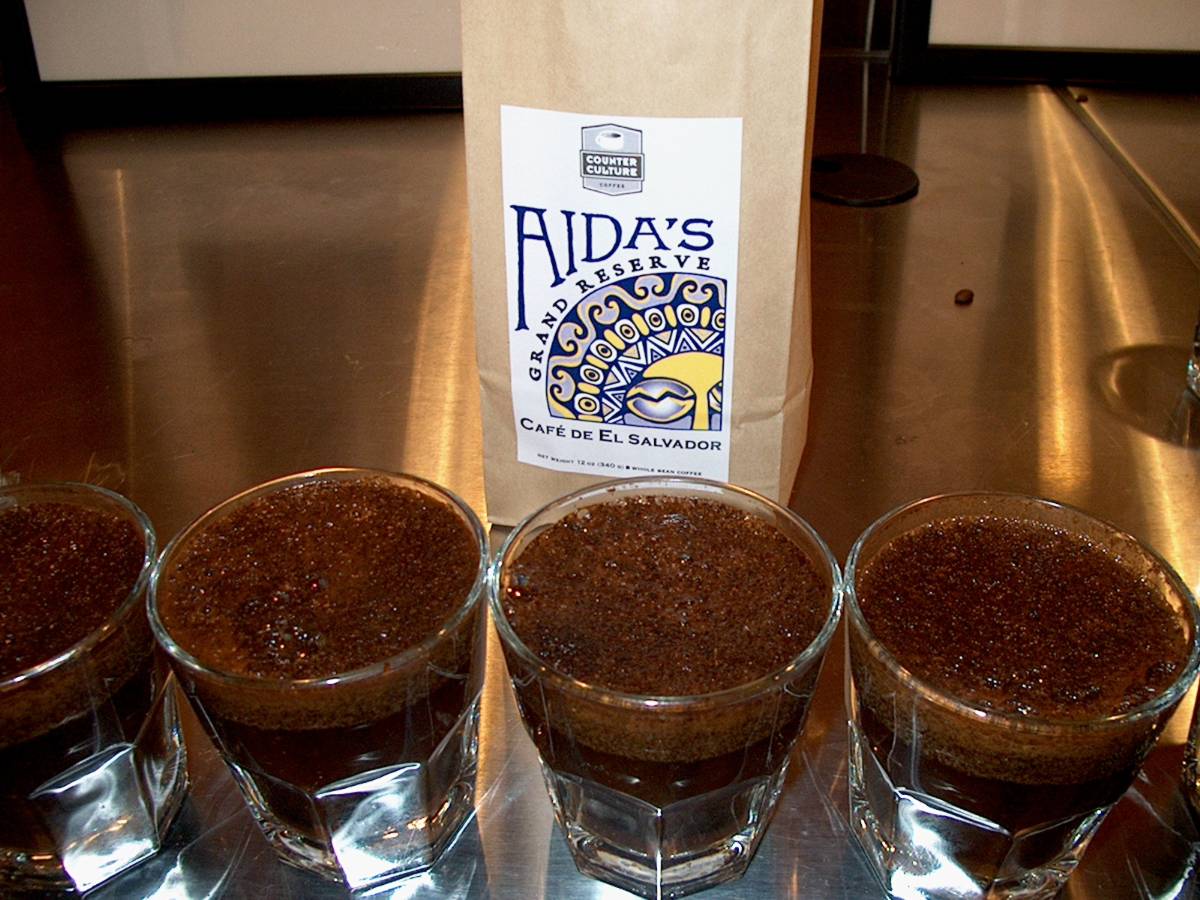
The closeness I feel to this coffee, after meeting with the farmer and seeing photos of the people who pick and sort it by hand increased my appreciation for it all that much more. I'm really going to be working hard to increase the knowledge base of our customers to reel them into understanding these kinds of coffees, their scarcity and their value. Casual coffee drinkers could have their coffee drinking experience so much more enriched with the proper education. I have been talking to customers one at a time about these kinds of coffees, and even let one sample the Grand Reserve. I had him scared to spill a drop of it on the way to his table, and he loved it and appreciated it down to the dust at the bottom of his cup. Aida showed me how little I know and understand about the cultivation of coffee. There is so much work and sweat and manure and miles and lives and stainless steel between the farm and table, I doubt if anyone has more than a window of understanding into the whole journey of the bean from proverbial seed, to proverbial cup.
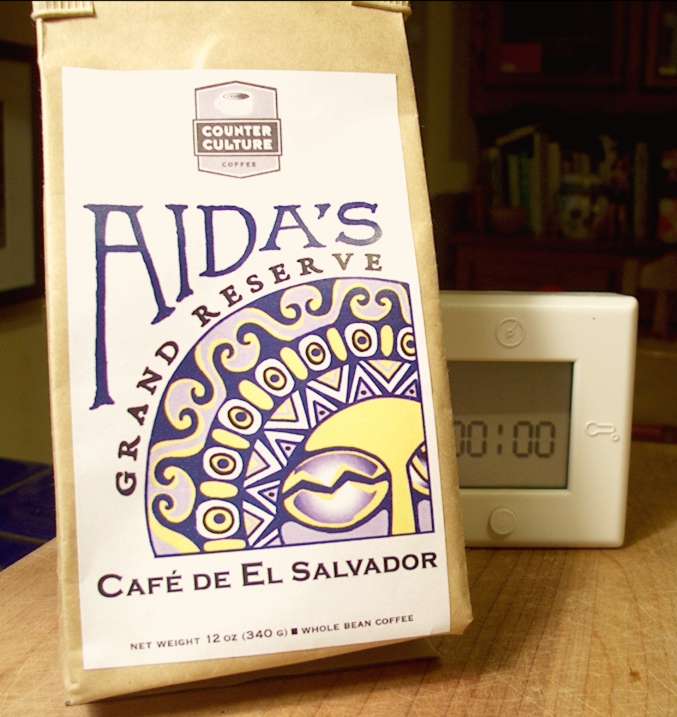
I thought I let her slip through my hands, I had not sampled it when I had the opportunity. Then, out of nowhere, a sample showed up. Plus, I will be meeting Aida Battle this weekend at CCC.
Apricots, Nectarines, and Mandarin Oranges.

The mission: To train all the Baristas of an established coffee shop, and the G.M too.
The complication: Six of the Baristas, with experience ranging from 3 years to 3 months, have been working on all the equipment, having been trained in the "sink or swim", learn-through-osmosis tradition. The other 3 are new, thankfully, and will be the proverbial blank slate.
The problem with re-training Baristas who believe they have already been trained is that they believe they have already been trained. The ones that have been there the longest also believe that they know what's what, and have seniority. Salt is added to the injury in the fact that I have only been working at this shop for 7 months, and I only work on Friday nights. I try, however, to keep my mind open to knew knowledge and techniques. If something comes along that improves freshness, quality, increases public education, or in some way advances the industry, I would like to think that I will check it our and verify for myself before either incorporating it into my mental model, or writing it off. The average PBTC, I have noticed over the years, will accept certain things as truth from the beginning without having any understanding of why it is the truth. This can and does lead to a wide variety of myths and fallacies passed on from one Barista to the next. Let me illustrate with a "humorous anecdote".
Mama Jones teaches her daughter (son) how to prepare the Christmas (Passover) ham (Matzah balls, or ham, like my Jewish vegetarian friend Jonathan). Little Debbie (insert non insulting yet ethnic sounding name of either gender here) asked her mom why she has to cut three inches of ham off the end, and she says:
"My Momma always made it like that".
In a puzzled state of confusion, they called Grandma Jones to ask why, and her response was,
"My Momma always made it like that".
This was no better, so they called Great Grandma Jones to ask her.
"Great Grandma" they questioned, "why do you cut off the last three inches of ham?"
Her answer was simply this:
"I could never afford a lager pan, I cut off the part that didn't fit".
Baristas who are not given an understanding of why they need to perform certain procedures a certain way can and will propagate a habit to other Baristas without explanation. It seems that there are only a handful of Baristas who have the wherewithal to ask why. I have noticed that some will give reasons that make no logical sense, but that is what they have been told by others. I have also noticed that some Baristas will deliberately make up reasons because they have a hidden agenda, and they want things done their way for their own reasons.
It is a delicate task to cut and paste new information into an existing set of mores. One cannot expect to rush in and proclaim ultimate control of all procedures. New ways of doing things will be balked at. In cases where it is more convenient for the Barista to do the less fresh, lower quality procedure, there will be turbulence. The funny thing is, they will blame the customers buy saying if it takes longer to do something the customers will complain and become impatient. I wonder if they will be able to see the flaw in the philosophy of convenience before quality.
"If you can wait one minute, I'll have a perfectly fresh cup for you, thanks."
vs.
"I knew you would be in a hurry, so I had the closing staff grind all the coffee last night, it's all stale, but I'm saving you 30 seconds of your valuable morning."
It is true that specialty coffee shops are held in a dualistically oxymoronic view by the general public. We are supposed to provide them with a gourmet product of the highest quality. They expect a certain level of culinary achievement and an atmosphere of culture, all with the efficiency of the MacDonald's drive through window. At least once every Friday night I hear a customer plead with me for their drink while I am delivering someone else’s beverage to the counter.
"Excuse me, I had ordered the triple pumpkin spice skinny mocha."
I check my list of tickets, and sure enough, it will be one of the next two drinks to make. The problem is that they ordered the drink four minutes ago, and it is not ready yet. They automatically assume I lost the ticket. So there is a two fold educational journey upon which I must embark. The Baristas need to learn how to draw the best shots and build the best drinks without compromise. The customers must be brought into the fold and made to understand the caliber of beverage they are receiving. It is an entierly different thing to teach someone how to spark the imagination of a customer. There is a certain "je ne sais quoi" in the way one can talk about coffee to a customer that conveys a sense of passion and enthusiasm and love for the product. The ability to pull someone into the vortex, and grab them by the buds, is perhaps more of a chracteristic than a skill.
I don't expect everyone to be trouble, but I know there will be some problem areas. I fact, I know some of them are excited about getting things going towards a higher quality of product. The training process will go on for months just the get everybody in the shop up to snuff. By then someone will have gone back to school, taken another job, moved out of town. Then the knowledge will be passed on to someone new. I don't mind, I asked for this.
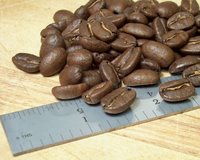

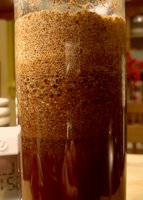
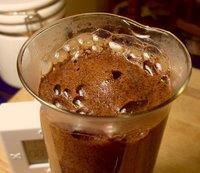
I don't know much about this Papua New Guinea, the "Red Mountain". It just came into the shop today for the first time. The roasting would have been done just yesterday, and the ridiculous amount of gas it gave off would seem to support that. As soon as the hot water hit the inside of the beaker the grounds puffed up bigger than any coffee I have ever seen. The crust expanded and put out large bubbles like a seventh grade vinegar and baking soada volcano. I had to wait a minute just to add the rest of the water, after the grounds settled back down a bit.
There was a sweetness to the aroma that it was giving off that put me very much in mind of red velvet cake, if you know what that is. It's really just chocolate cake with enough red food coloring in it to wipe out half the cactus population in Mexico. But then I thought, just because they call it "Red" Mountain does not mean I have to envision red things in the flavor, does it? Then I came to my senses, it was caramel. It smelled like a dark molases enhanced caramel. For some reason, I always think of bread when I smell the coffee crust, but this another story; sweet caramel.
After plunging and pouring, I noticed that there was not the amount of oily residue floating on top, at least not as much as I expect from a plunged brew. There was, however, a very persistant foam that took a good 6-8 minutes to dissapate. I wish crema was as tenacious. Hmm, maybe this would be good in espresso, carmel, crema, try it out folks and see what you get.
The body seemed medium to thin, but not in a negative way. It was very much in balance with the very pleasant acidity which was lightly giving off a little grapefruit/tangerine, very lightly. A slight buttery mouthfeel complemented the the balanced acid/body very well too; the trifecta of tactile.
At this point I could swear my mouth was begining to warm up a bit, the way it would with spice. Not woody spice like cloves or nutmeg, but like red peppers? No, it seemed not quite that intense, ginger I think. Not the flavor of the ginger, but the heat of it.
One of the really pleasant things about this coffe was the way the aftertaste came on as a kind of sweentness, and then sharply trailed off to a mild hint, a shadow of the beautifully balanced appeal it had in the begining. The acidity became more prominent as it cooled off, which gave it a crispness that was just approaching the cusp of some African coffees, but still held on to its clean Indonesian roots.
This was an excellent coffee that would go very well as an after dinner beverage, rounding off a filling a thick textured meal. But I get the feeling you would need a vanilla dessert, not chocolate. So if you are into coffe and food pairings, that would be my recomendation.
(edit: I just realized that apparently Daniel Humphries and Daryn Berlyn are also thinking of drawing straight shots of this stuff, follow the same link in "get to know your roasters")
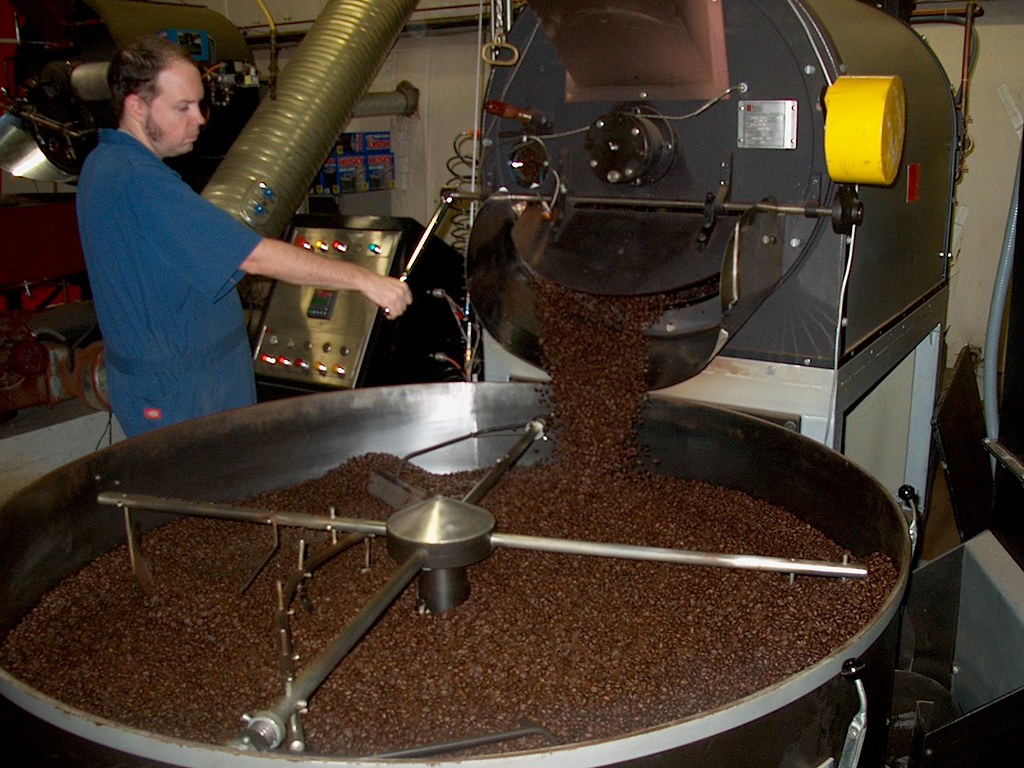
Read this blog entry for some insight into the Roaster/Barista relationship, and think about how you can contribute to the growing knowledge of coffee and espresso. It has been a fortnight or two since the Americans threw away all that perfectly good tea, only to replace it with a beverage so completly misterious that it's proper preparation remains an enigma, wrapped in a parchment, embeded in a cherry. The bean, like an onion, continues to reveal layer after layer of new flavors, nuances, techniques, tehchnologies, as well as myths and missinformation. Let us not peel on our own, but join together in the fight against blackend beans, big gulp beverages, and high fructose concoctions. Now, if you will excuse me, I feel like a nice tall glass of Lipton ice tea.

